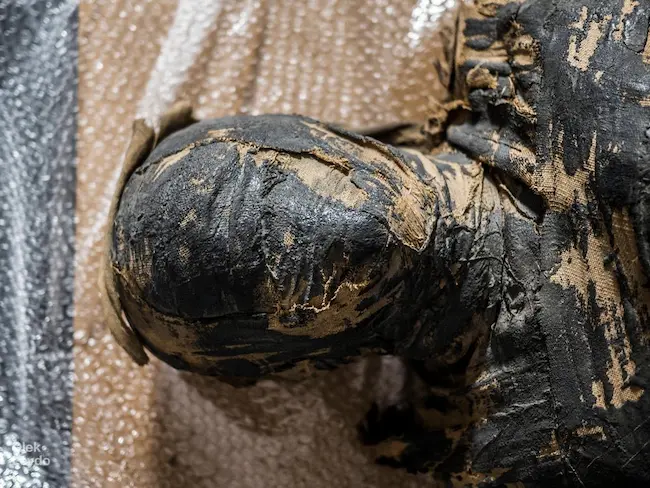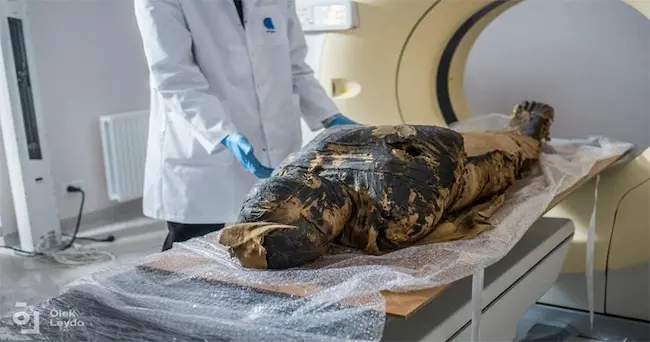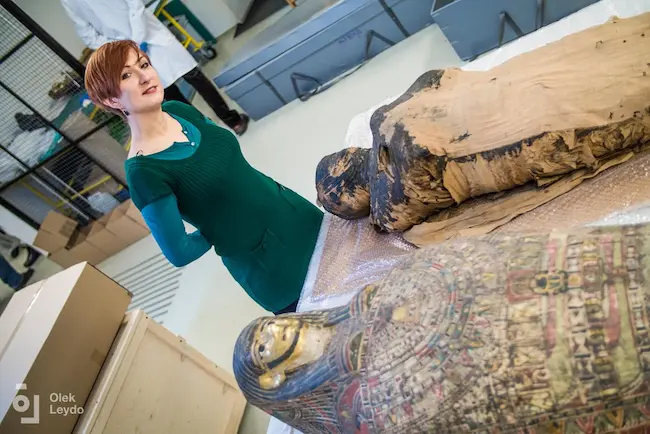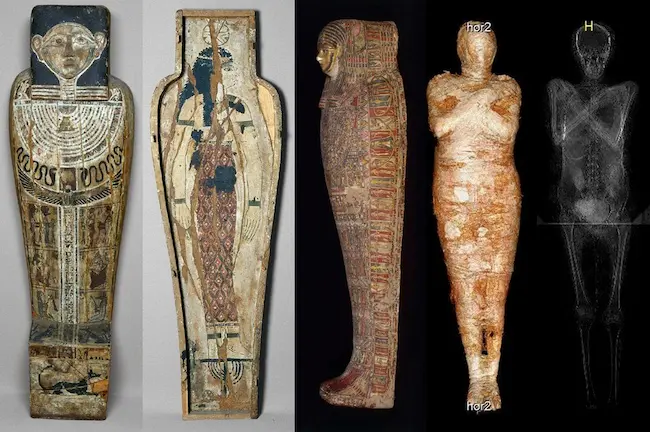The University of Warsaw acquired an Egyptian mummy with an ornate coffin in the early 19th century, identifying the deceased as a priest named Hor-Djehuty. However, in 2016, researchers were astonished to find that the mummy was actually of an unidentified young woman, rather than a man as previously thought. This revelation was made possible through the use of X-ray technology. But the surprises did not end there, as researchers also discovered a small foot in the mummy’s pelvic area, indicating that the woman was pregnant at the time of her death. The findings have shed new light on ancient Egyptian society and the customs surrounding death and burial.

In a recent study published in the Journal of Archaeological Science, researchers revealed that they were “shocked” to discover that the 2,000-year-old Egyptian mummy was a pregnant woman, making it “the only known case of an embalmed pregnant individual.” The mummy was acquired by the University of Warsaw in the early 19th century, but it was not until modern technology was used that the true identity of the deceased was revealed.

The woman, who remains unidentified, was buried alongside a rich array of jewelry and amulets, indicating that she was of high status. CT scans of the body showed that she was between 20 and 30 years old at the time of her death. Experts believe that the woman was mummified with care in the first century B.C.

While the cause of death is unknown, the high rate of maternal mortality in the ancient world suggests that pregnancy may have played a role. The study also notes that the mummy shows signs of looting, which may have occurred during the 19th century when illegal excavators and looters often partially unwrapped mummies and searched for valuable objects before returning the bodies to coffins.

The discovery of the “mysterious lady of the National Museum in Warsaw” has provided new insights into ancient Egyptian society and the customs surrounding death and burial. As the researchers continue to study the mummy, they hope to learn more about pregnancy and maternal health in the ancient world.

